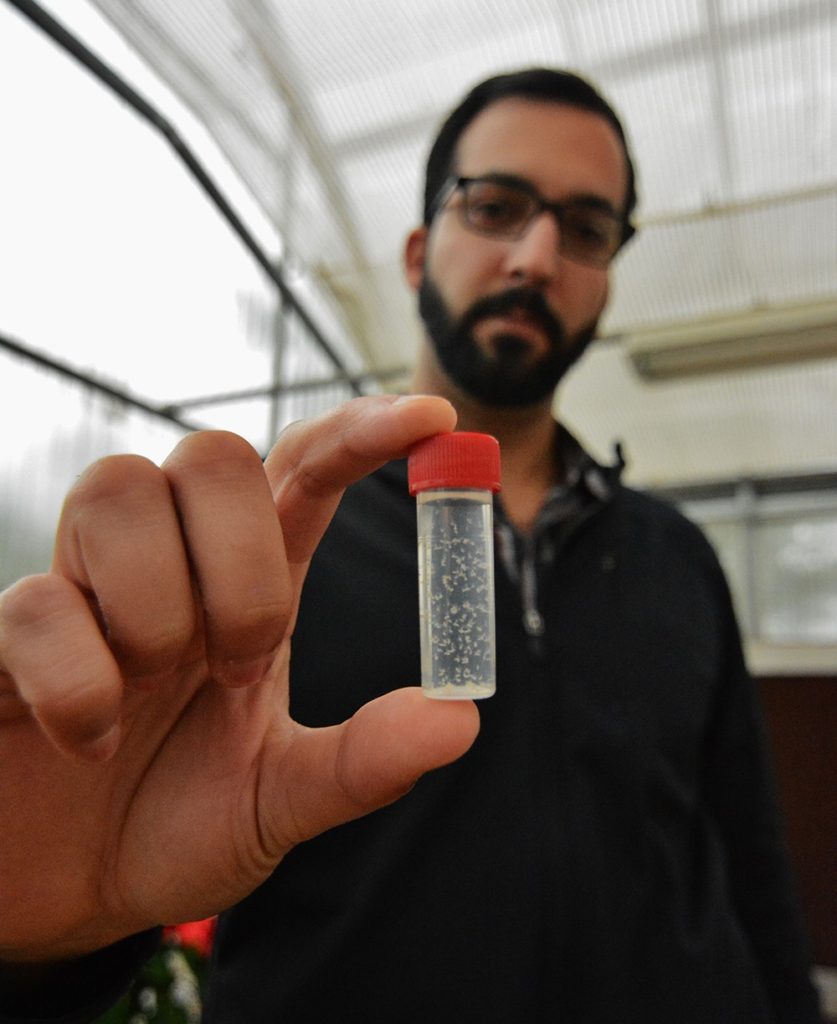
A pesticide-resistant population of common plant-damaging whiteflies has been found in Texas, according to a Texas A&M AgriLife Extension Service specialist.
Whiteflies are sucking, insect pests similar to aphids, and damage ornamental and food plants, said Erfan Vafaie, AgriLife Extension program specialist in integrated pest management, Overton. Adults are winged while young whiteflies lie flat against leaves and can be difficult to see with the naked eye.
They reduce plant growth by taking away its nutrients, he said. Whiteflies also secrete honeydew, which can lead to sooty mold. This will not directly hurt the plant, but can reduce its aesthetics and the plant’s ability to absorb the sunlight it needs to acquire energy.
“They’re sucking the nitrogen out of the plant to make proteins and with those proteins they can make more babies,” he said.
Whiteflies attack a wide variety of plant hosts, Vafaie said.
He said a population of whiteflies within the species that is resistant to certain pesticides typically used to combat the pest have been reported in Texas. The Med biotype, named for their region of origin in the Mediterranean, or Q biotype, whitefly was first spotted in the U.S. in 2004 in Florida.
“If you’re seeing whiteflies in your landscape and have been trying to control them, and you’re using the same insecticides over and over without getting good control, there’s a good chance you have that resistant population,” he said.
Vafaie is studying subsets within whitefly populations using poinsettias as the host plant for his trials using biological control. He is testing how well releasing beneficial insects can work to manage insecticide-resistant whiteflies.
“We know we have this population in Texas and several other U.S. states, Mexico and Canada, so it’s important to consider alternative insecticides for management,” he said.
Vafaie said the following active ingredients will control Q-type whiteflies, according to Extension publications from the University of Florida: abamectin, Beauveria bassiana, Isaria fumosorosea, pyridaben, horticultural oil, insecticidal soap, spiromesifen, spirotetramat, pyrifluquinazon, thiamethoxam, dinotefuran, cyantraniliprole and acetamiprid.
Avoid these active ingredients when fighting Q-type whiteflies: imidacloprid, pyriproxyfen, pymetrozine, kinoprene and buprofezin.
“If populations of an infestation are growing rapidly then homeowners should treat the plants,” Vafaie said. “Use contact insecticides to knock down the current population, then consider a systemic for long-term control.”
Vafaie said some of the insecticides with the necessary active ingredients to treat Q-type whiteflies may not be found at typical retail locations. It may be necessary to visit a specialty store or contact landscape professionals for products and/or services.
###
This story by Adam Russell originally appeared in AgriLife Today.





